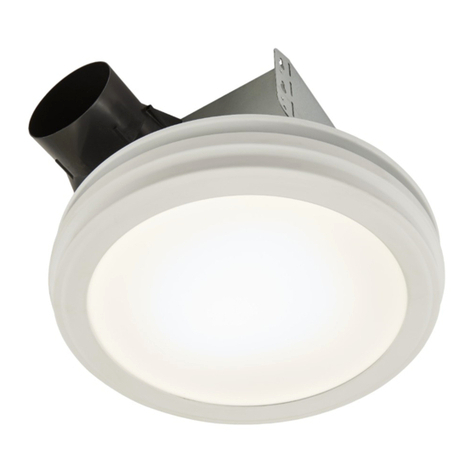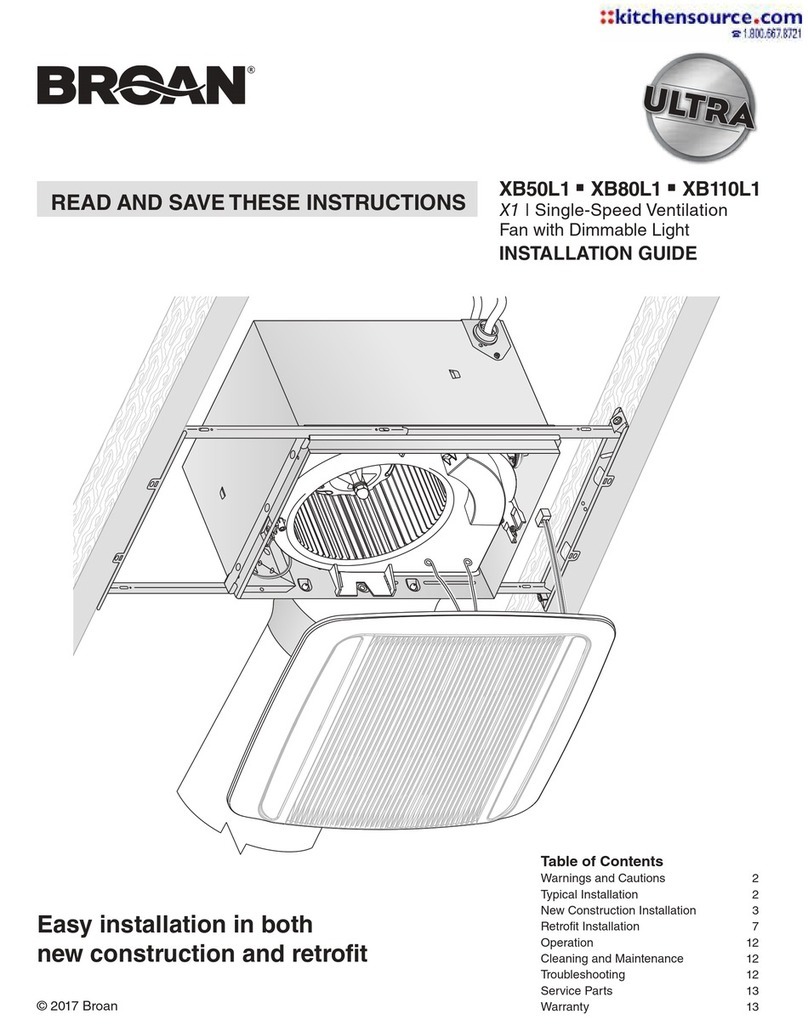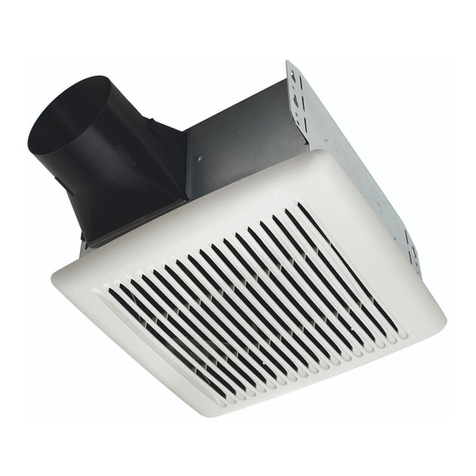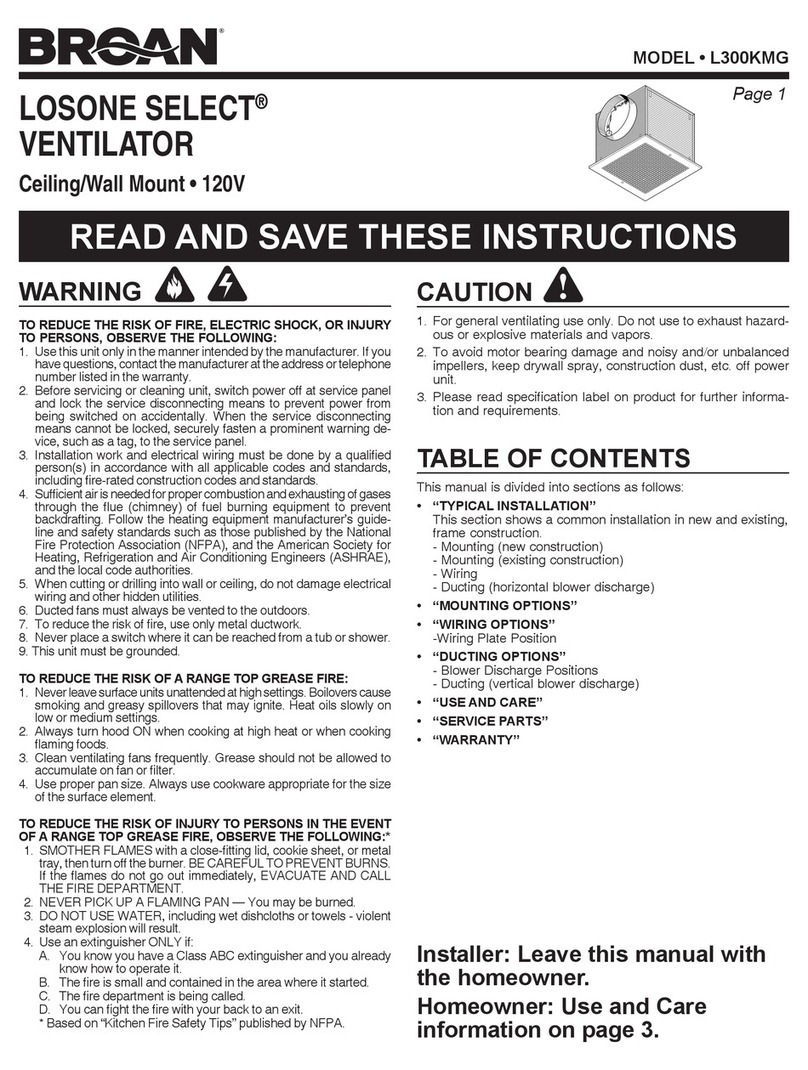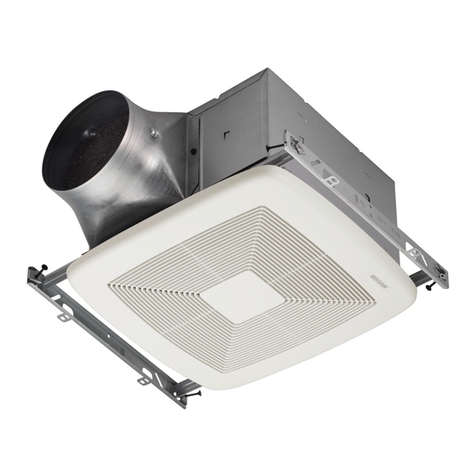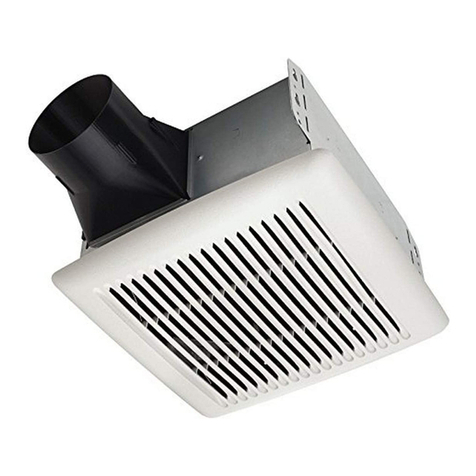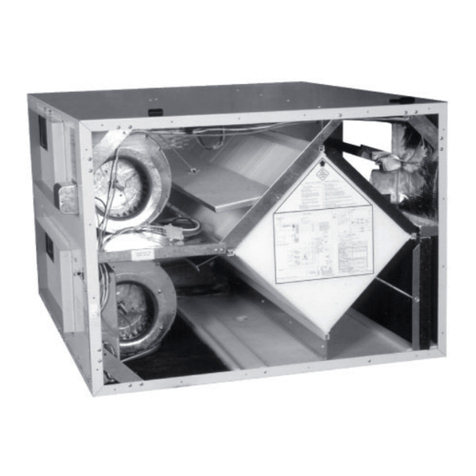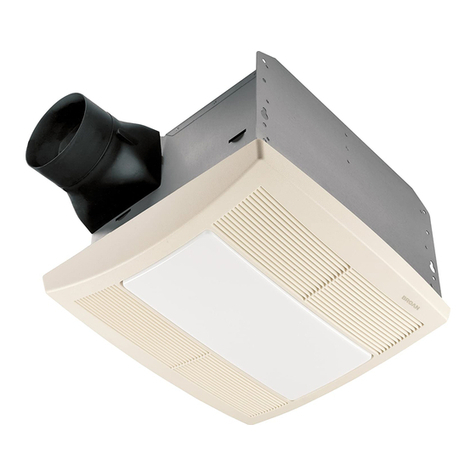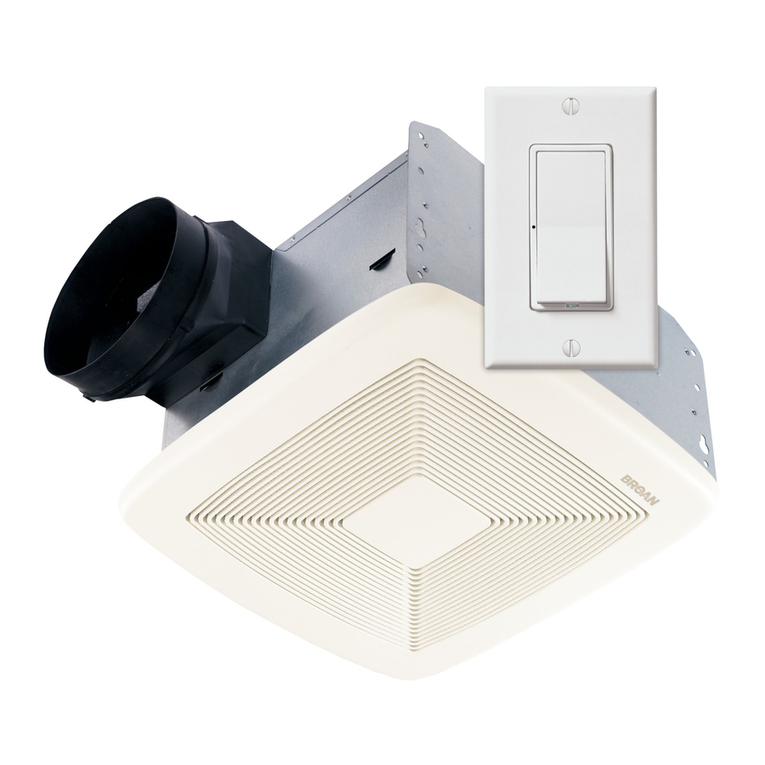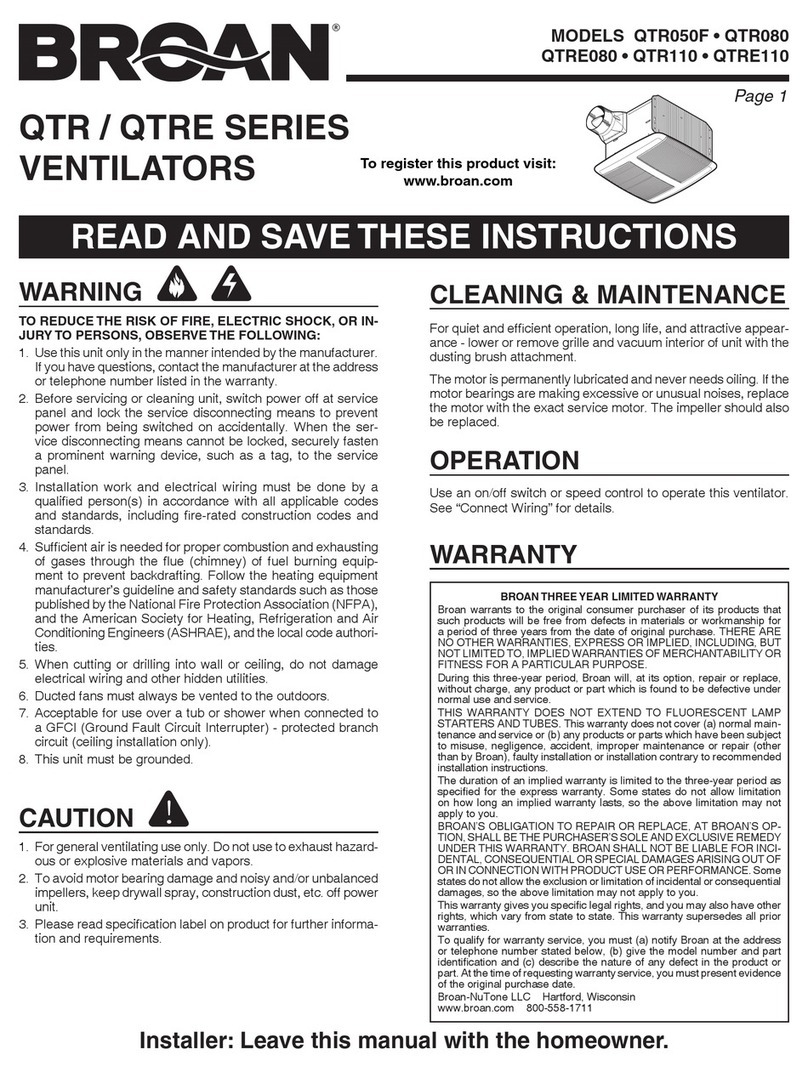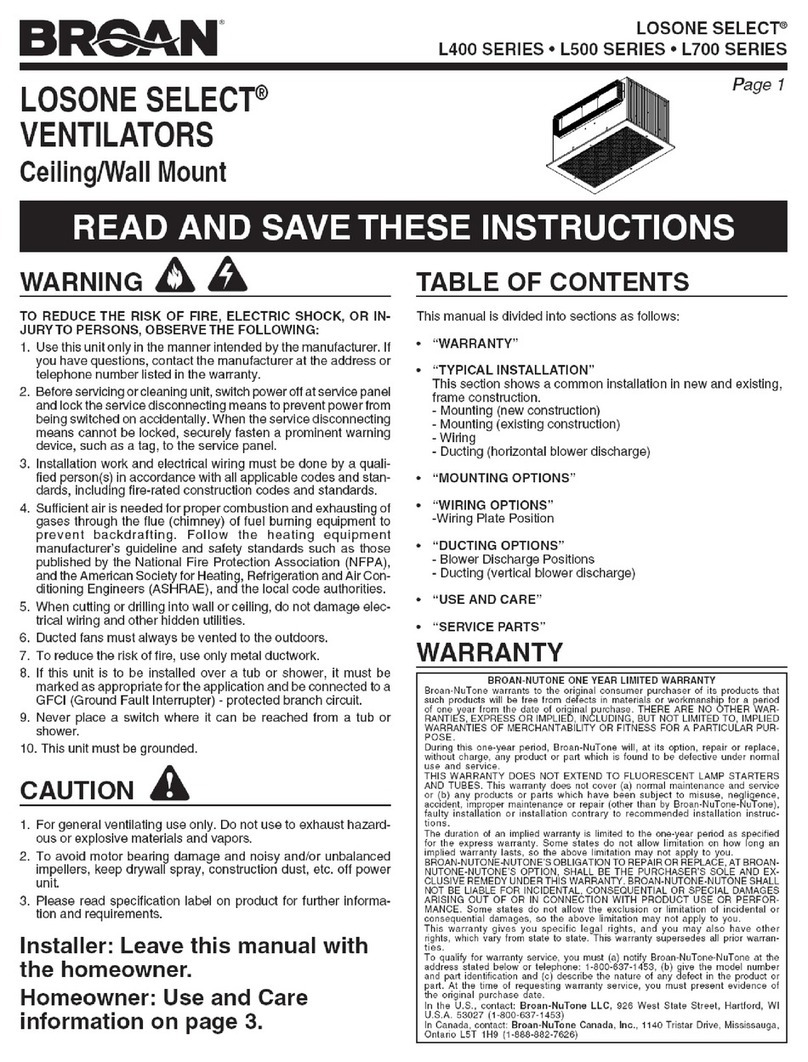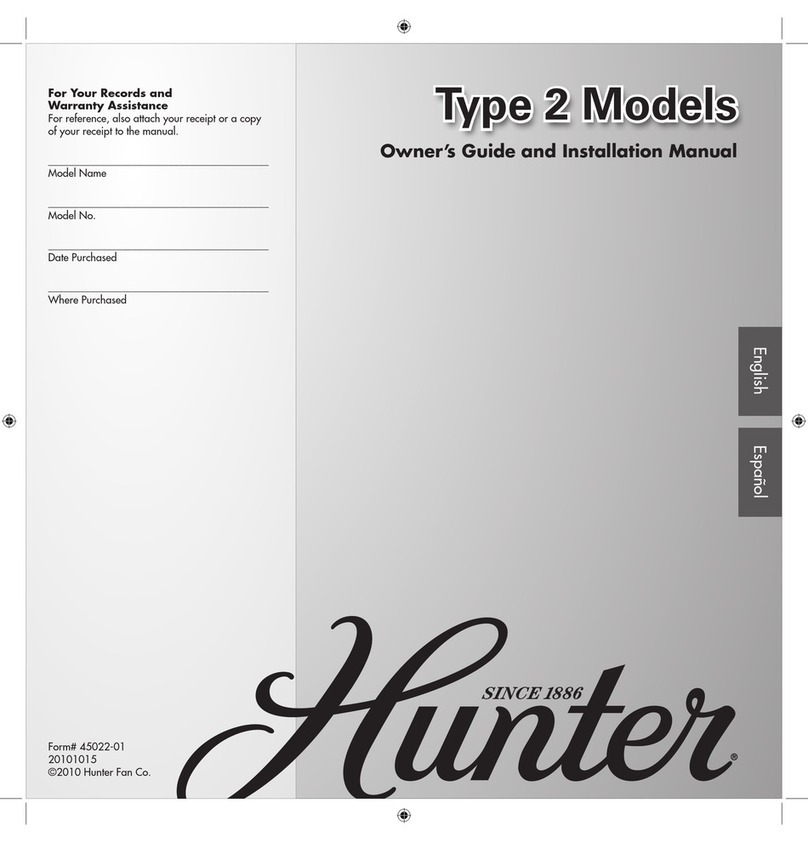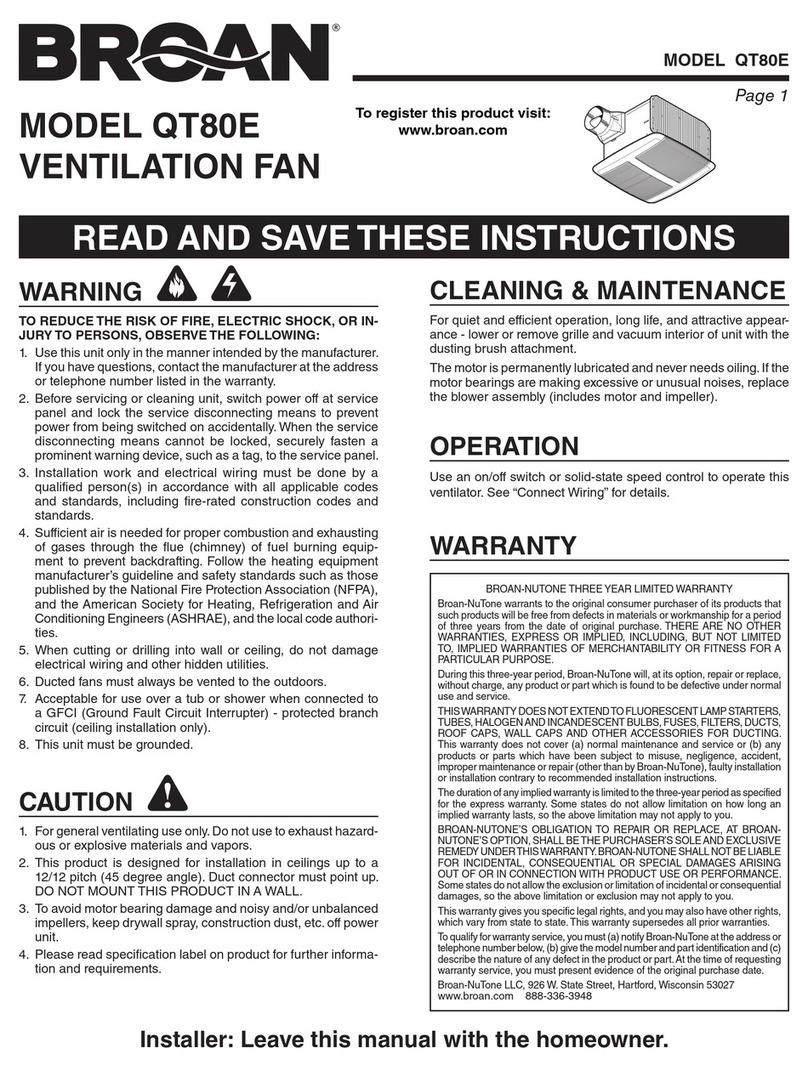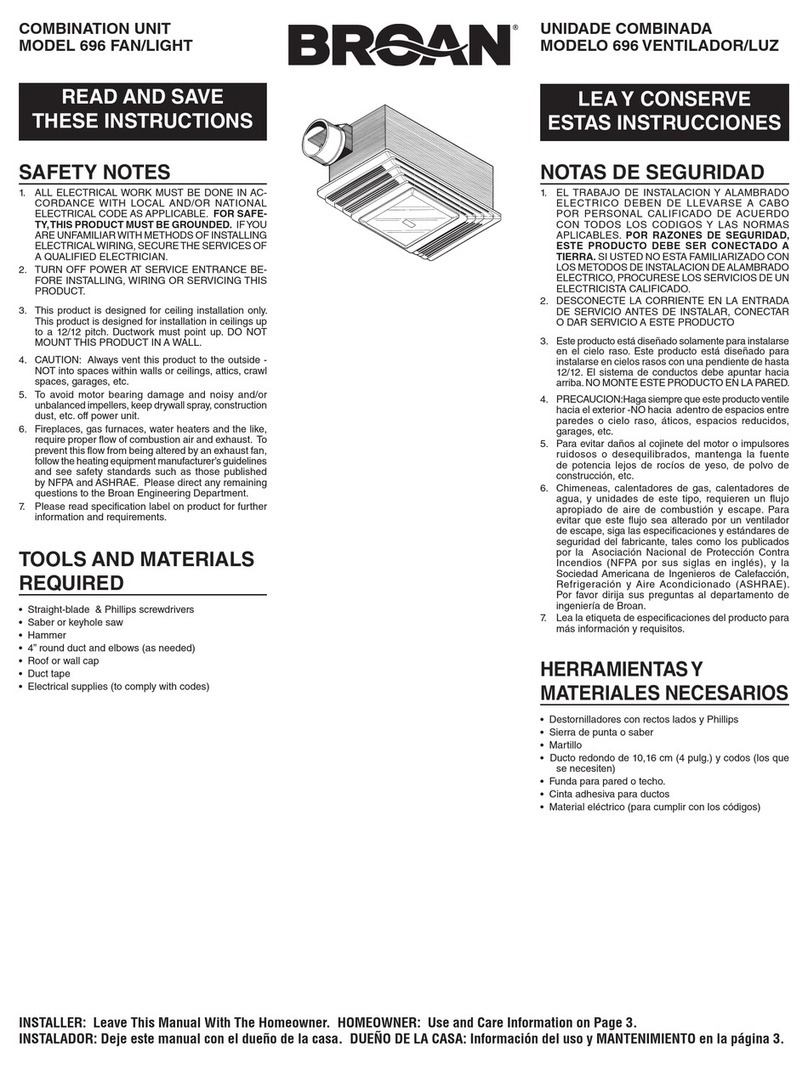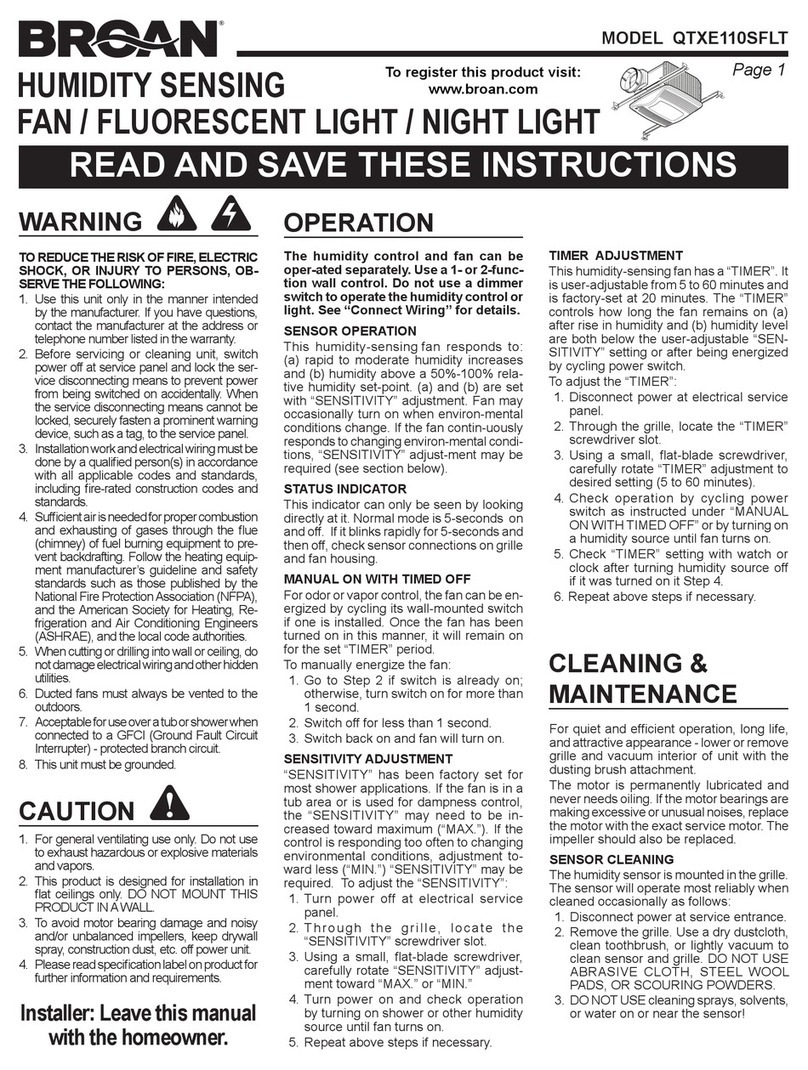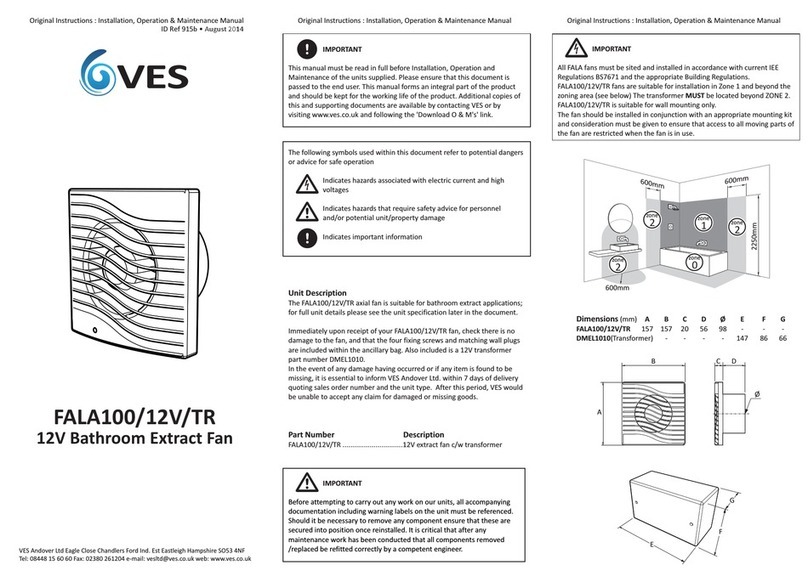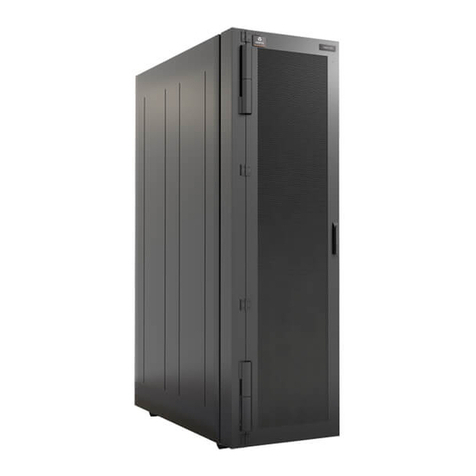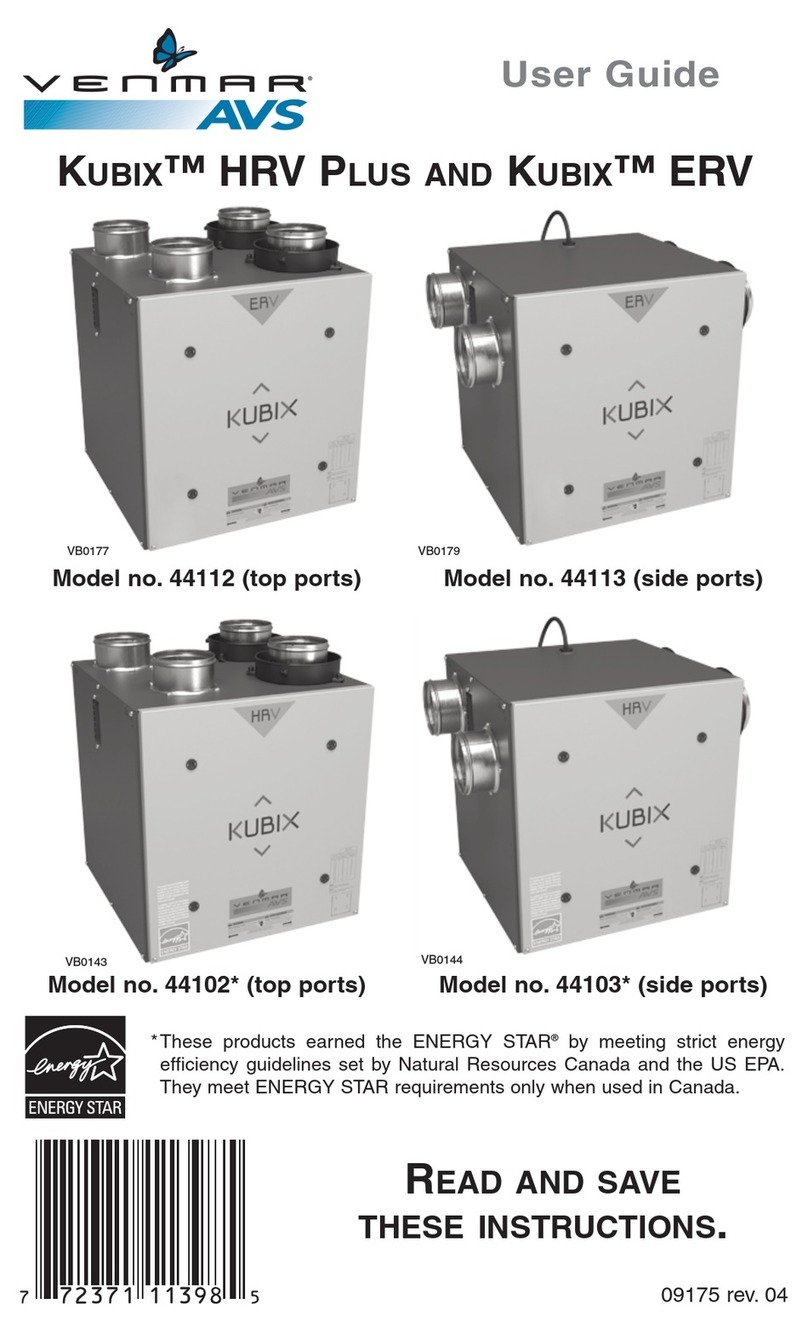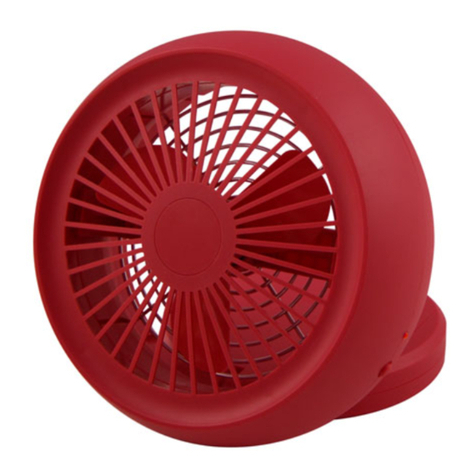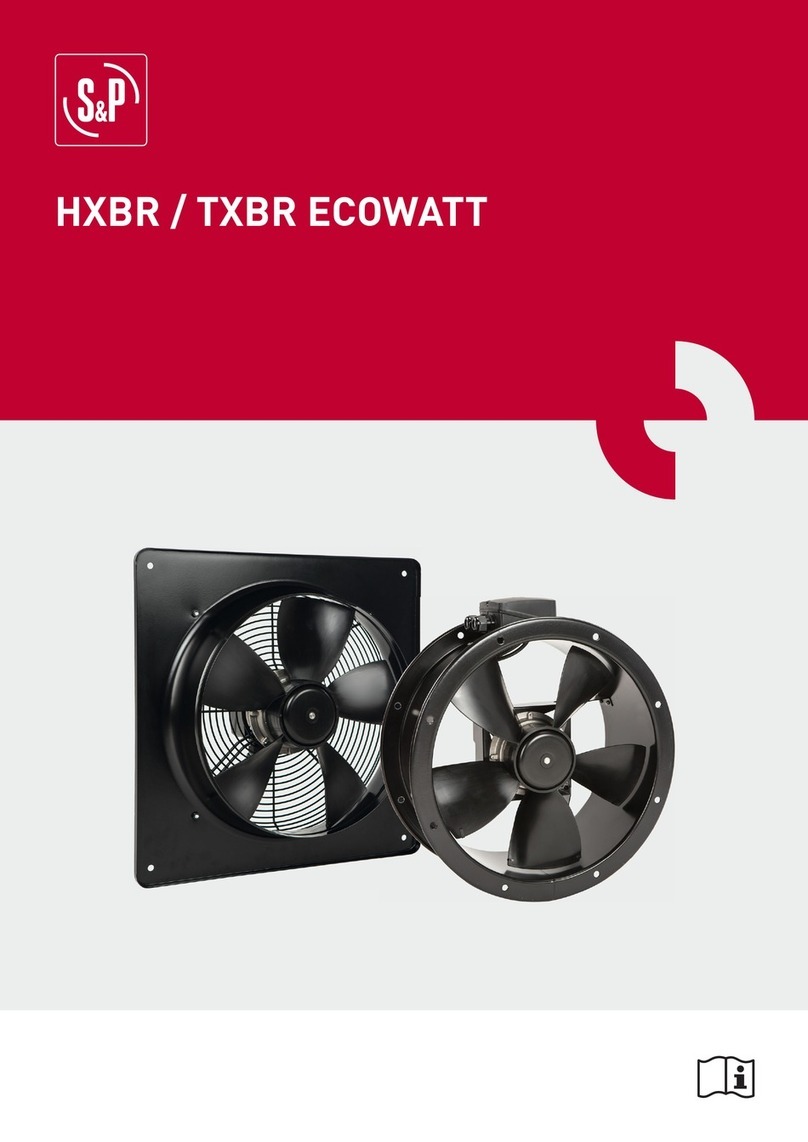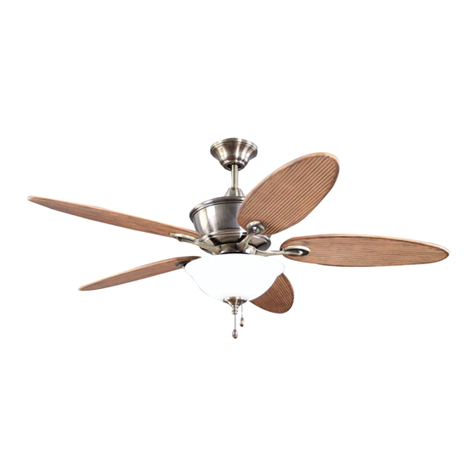
3
TABLE OF CONTENTS
1. TECHNICAL DATA ...............................................................................................................4
1.1 AIR DISTRIBUTION (NORMAL OPERATION) .............................................................................................4
2. INSTALLATION....................................................................................................................4
2.1 LOCATING AND MOUNTING THE UNIT .....................................................................................................4
2.2 INSTALLING THE DUCTWORK AND THE REGISTERS.............................................................................6
2.2.1 FULLY DUCTED SYSTEM (T-1) (THIS CONFIGURATION ALLOWS RECIRCULATION MODE TO OPERATE.)............................6
2.2.2 EXHAUST DUCTED SYSTEM (T-2) (THIS CONFIGURATION ALLOWS RECIRCULATION MODE TO OPERATE.) .......................6
2.2.3 SIMPLIFIED INSTALLATION (T-4) (THIS CONFIGURATION DOES NOT ALLOW RECIRCULATION MODE TO OPERATE.) ..............7
2.3 CONNECTING THE DRAIN (HRV ONLY)....................................................................................................8
2.4 INSTALLING DUAL EXTERIOR HOOD USING TANDEM®TRANSITION KIT (OPTIONAL) .......................8
2.5 INSTALLING THE EXTERIOR HOODS .......................................................................................................9
2.6 CONNECTING THE DUCTS TO THE UNIT.................................................................................................9
2.6.1 DUCTS CONNECTION ................................................................................................................................. 10
3. CONNECTIONS.................................................................................................................11
3.1 ELECTRICAL CONNECTION TO OPTIONAL MAIN WALL CONTROL .................................................... 11
3.1.1 ELECTRICAL CONNECTION TO SPEED, DEHUMIDISTAT OR AUTOMATIC OPTIONAL MAIN WALL CONTROL ..................... 11
3.1.2 ELECTRICAL CONNECTION TO ADVANCED OPTIONAL MAIN WALL CONTROL.......................................................... 11
3.2 ELECTRICAL CONNECTION TO OPTIONAL AUXILIARY WALL CONTROL ........................................... 12
3.2.1 ELECTRICAL CONNECTION TO 20-40-60 OPTIONAL AUXILIARY WALL CONTROL................................................... 12
3.2.2 ELECTRICAL CONNECTION TO DRY CONTACT OPTIONAL AUXILIARY WALL CONTROL (E.G. CRANK TIMER)................. 12
3.3 CONNECTION TO THE CENTRAL FORCED-AIR SYSTEM .....................................................................13
3.3.1 UNIT OPERATION USING ADRY CONTACT CONNECTION................................................................................... 13
3.3.2 UNIT INTERCONNECTION WITH CENTRAL FORCED-AIR SYSTEM (R/C/G/GF)....................................................... 13
3.3.3 SYNCHRONIZATION WITH CENTRAL FORCED-AIR SYSTEM FUNCTION................................................................... 13
4. WIRING DIAGRAM ............................................................................................................14
5. NAVIGATION ON LCD SCREEN.......................................................................................15
5.1 LCD SCREEN ............................................................................................................................................ 16
5.2 UNIT FIRST BOOT.....................................................................................................................................16
5.3 SETTINGS MODIFICATION....................................................................................................................... 16
5.3.1 PROCEDURE TO MODIFY MIN CFM SETTING.................................................................................................... 16
5.3.2 PROCEDURE TO MODIFY MAX CFM SETTING................................................................................................... 16
5.3.3 PROCEDURE TO MODIFY OPTIONS SETTING................................................................................................... 16
5.3.4 PROCEDURE TO MODIFY INDEPENDENT AIRFLOWS SETTING.............................................................................. 16
5.4 FACTORY SETTINGS RESET ...................................................................................................................17
6. USING THIS UNIT..............................................................................................................17
6.1 YOUR VENTILATION SYSTEM .................................................................................................................. 17
6.2 INTEGRATED CONTROL ..........................................................................................................................17
6.3 AHU MODE DISPLAY ................................................................................................................................ 17
7. SERVICE PARTS................................................................................................................18
8. INSTALLER’S TROUBLESHOOTING ...............................................................................20
9. MAINTENANCE.................................................................................................................23
9.1 QUARTERLY ..............................................................................................................................................23
9.2 ANNUAL (AT FALL) ....................................................................................................................................24
10. USER’S TROUBLESHOOTING .......................................................................................24
11. WARRANTY......................................................................................................................25

